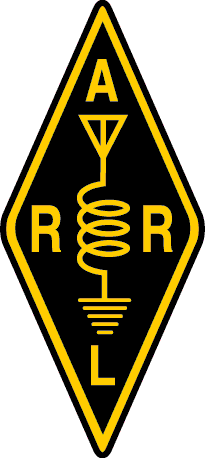 Time to think of building some new antennas! This is excellent news out of the ARRL. Kudos to all who worked on getting this passed at the WRC-12.
Time to think of building some new antennas! This is excellent news out of the ARRL. Kudos to all who worked on getting this passed at the WRC-12.
(Source: ARRL)
It’s official — delegates attending the 2012 World Radiocommunication Conference (WRC-12) have approved a new 7-kilohertz-wide secondary allocation between 472-479 kHz for the Amateur Radio Service. Agenda Item 1.23 had both its first and second readings in Plenary Session on Tuesday, February 14; to become part of the ITU’s Radio Regulations, each Agenda Item must be read twice in Plenary Session. The new allocation will become official on Friday, February 17 at the close of the Conference.
“This is a fantastic achievement for the Amateur Radio Service,” IARU President Tim Ellam. VE6SH, told the ARRL. “A new allocation for spectrum is always something that should be celebrated. The success on this issue is due to the hard work over the last four years from our IARU representatives, as well as the volunteers from the numerous IARU Member-Societies who have worked within the ITU process on behalf of their national administrations. This is excellent work from our team in Geneva, and from those who have assisted from their home countries.”
Agenda Item 1.23 originally called for a 15-kilohertz-wide spectrum in parts of the band 415-526.5 kHz, taking into account the need to protect existing services. But according to ARRL Chief Executive Officer David Sumner, K1ZZ, this was in conflict with the Maritime Mobile Service. WRC-12 delegates approved Agenda Item 1.10, which called for a worldwide exclusive allocation to the Maritime Mobile Service of 495-505 kHz. Discussion of this allocation to Maritime Mobile “has been in the works throughout the conference preparation (i.e. since 2008),” Sumner explained, “and was the reason why the MF amateur allocation could not be made in this band as some amateurs had hoped. That’s why we had to look elsewhere and is what put us in conflict with aeronautical radionavigation.”
According to Colin Thomas, G3PSM, CEPT Coordinator for Agenda Item 1.23, WRC-12 delegates moved forward early in the Conference with what he called a “compromise proposal” for the new allocation. “Progress was made with a compromise proposal on Agenda Item 1.23, drafted to take into consideration the views of those for and those against an Amateur Service allocation around 500 kHz. This proposal suggests a 7-kilohertz segment between 472-479 kHz, very close to the CEPT position of 472-480 kHz.”
The new allocation calls for a worldwide secondary allocation to the Amateur Service at 472-479 kHz, with a power limit of 1 W EIRP. A provision has been made, however, for administrations to permit up to 5 W EIRP for stations located more than 800 km from certain countries that wish to protect their aeronautical radionavigation service (non-directional beacons) from any possible interference. Footnotes (see below) provide administrations with opportunities to “opt out” of the amateur allocation and/or to upgrade their aeronautical radionavigation service to primary, if they wish to do so. In addition to these protections for aeronautical radionavigation, the Amateur Service must avoid harmful interference to the primary maritime mobile service. Quite a few additional administrations — mainly in the former Soviet Union and the Arab states — added their country’s names to the Footnotes prior to the Agenda Item’s consideration in Plenary.
More than 3000 participants — representing more than 150 out of the International Telecommunication Union’s 193 Member States — are attending the four-week conference. About 100 Observers from among the ITU’s 700 private sector members — along with international organizations, including the International Amateur Radio Union — are also in attendance. A number of WRC-12 delegates are radio amateurs, with many of them operating at 4U1ITU, the Amateur Radio station at ITU Headquarters. The station has been using the call sign 4U1WRC throughout the duration of the Conference. [Continue reading…]
